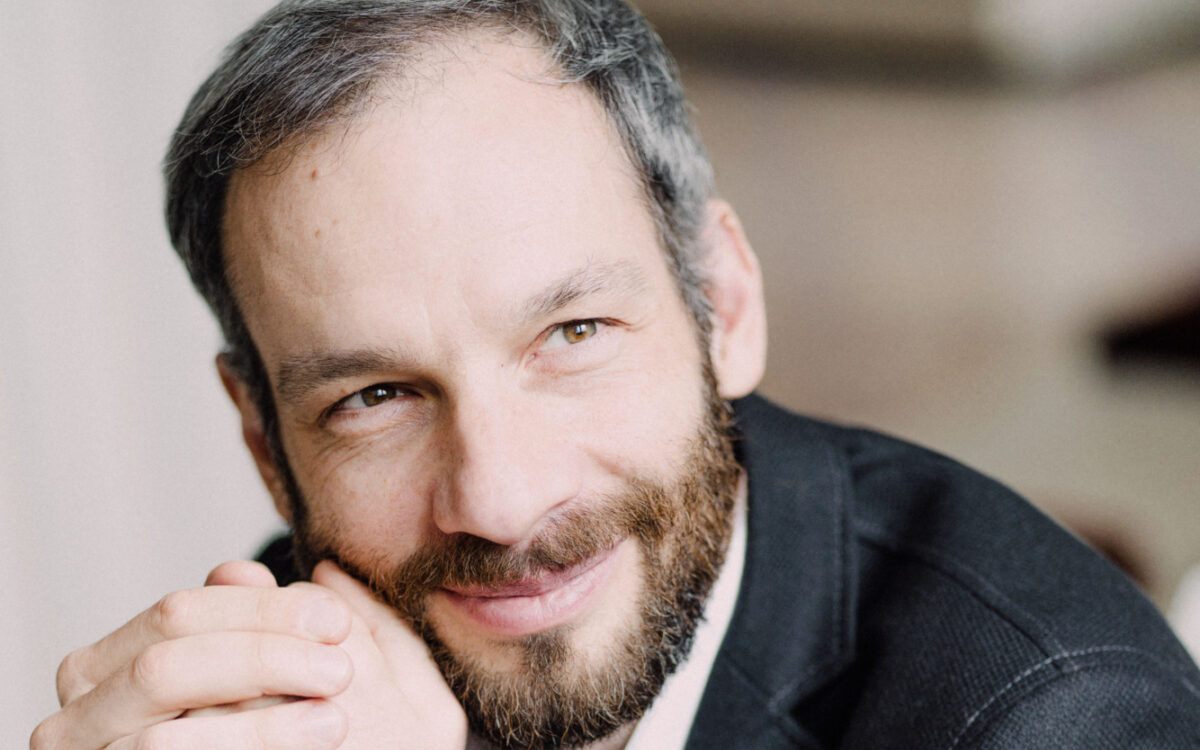Symphony No. 2, The Age of Anxiety
History
Bernstein began The Age of Anxiety, Symphony No. 2, in summer 1947 and completed it March 20, 1948, on commission from the Koussevitzky Foundation, dedicating it “For Serge Koussevitzky, in tribute.” The section entitled “The Dirge” was premiered on November 28, 1948, in Tel Aviv, Israel, with the composer as pianist and George Singer conducting the Israel Philharmonic Orchestra. The complete work was premiered with the composer as pianist and Serge Koussevitzky conducting the Boston Symphony Orchestra on April 8, 1949, at Symphony Hall in Boston. The first performance of the revised 1965 version took place on July 15, 1965, at Philharmonic Hall (now David Geffen Hall) in New York City, with Philippe Entremont as pianist and the composer conducting the New York Philharmonic. The BSO, Koussevitzky, and Bernstein gave the first Tanglewood performance on August 12, 1949, as part of Tanglewood on Parade.
Between July 1944 and November 1946, W.H. Auden wrote an extended poem (in print it runs eight pages) entitled The Age of Anxiety, subtitled “A Baroque Eclogue.” In it, three men and a woman—Quant, Malin, Emble, and Rosetta—meet in a New York bar, where each has come to find a cure for boredom, loneliness, lack of purpose—or, if not a cure, a means of forgetting them. The poem follows their thoughts and their conversation—with interruptions from radio broadcasts of war news and commercial messages—through a long night, first in the bar itself, then moving to Rosetta’s apartment, where the party continues, though the four individual participants become more and more isolated, even as they seek to end their rootlessness, through the attempt to find or accept a new faith. Finally, at dawn, Rosetta finds Emble passed out on her bed, while Quant and Malin say their goodbyes in the light of dawn on the streets and promptly forget one another’s existence. The very title of Auden’s poem has become an emblem to describe mid-20th-century life.
Leonard Bernstein was clearly taken with Auden’s poem, which provides not only a title for this Symphony No. 2, but what must be called its plot. The published score contains an extended note in which the composer describes his astonishment at realizing, after the fact, how closely the music echoed the poem, which had been intended as no more than a general guide to its structure and expression. Long after completing the work, he claimed to have found details intended as purely musical gestures that were also unconscious references to the poem. Yet a detailed connection between poem and symphony may be a stumbling block for listeners. Certainly most composers who have written a programmatic description of their music have found that, ultimately, it gets in the way of the music. Though Bernstein retained his elaborate description in the revised score, he chose to rewrite the ending in a way that makes musical sense while breaking away from the letter of Auden’s text. Throughout the work there is an elaborate solo piano part that makes the symphony a kind of piano concerto. In the original version, the piano was silent in the last section except for a single final chord. Bernstein had conceived this ending as the “phony faith” that the characters sought out; the pianist was to remain aloof from that self-serving search, except for “a final chord of affirmation at the end.”
But the more he considered his composition as a work of music rather than as the expression of a poem, Bernstein came to realize that the ending simply didn’t work. In a concerto-like piece, the piano’s natural function is to have a dialogue, to set up a contrast, with the orchestra. So the program went out the window in recognition of the musical requirements and in his 1965 revision he restored the piano’s concertante role for the finale.
Despite this significant change of heart, Bernstein has effectively projected much of the poetic “narrative” of The Age of Anxiety in musical terms. The first half of the score, after a prologue, consists of two sets of seven variations each, corresponding to Auden’s “Seven Ages” and “Seven Stages.” These never take a simple theme as the basis of the variations; they consist, rather, of fourteen brief, contrasting sections, each of which grows out of some idea in the preceding passage and generates another idea that will lead to the next section.
Not surprisingly, the rhythm and melodic character of many of these ideas are closely related to the sounds of ’40s swing and jazz, precisely the sounds that would have been heard on the radio in the bar where the four characters congregate and would best symbolize the spirit of the age. In addition, they mirror the nervous and hectic pace of modern urban life. There is, however, a striking exception at Variation VIII, the first of the “Seven Stages,” where the poem speaks of remoteness and hints of distant times and places. Here Bernstein casts the section in a broad 3/2 with a flowing melody in quarters and eighths over a stately bass line moving in half-notes. One can scarcely avoid hearing in this passage the echo of a “remote” dance style from a distant time and place, the Baroque sarabande.
The second part of the score, dealing with the four characters’ departure from the bar and their increasingly pointless and empty party at Rosetta’s place, combines elements of a twelve-tone row (from which evolves the theme of The Dirge), hectic and varied jazz figures in different moods (The Masque), and the final breaking-up of the party at dawn in a renewed search for positive values.
STEVEN LEDBETTER
Steven Ledbetter, a freelance writer and lecturer on music, was program annotator of the Boston Symphony Orchestra from 1979 to 1998.


